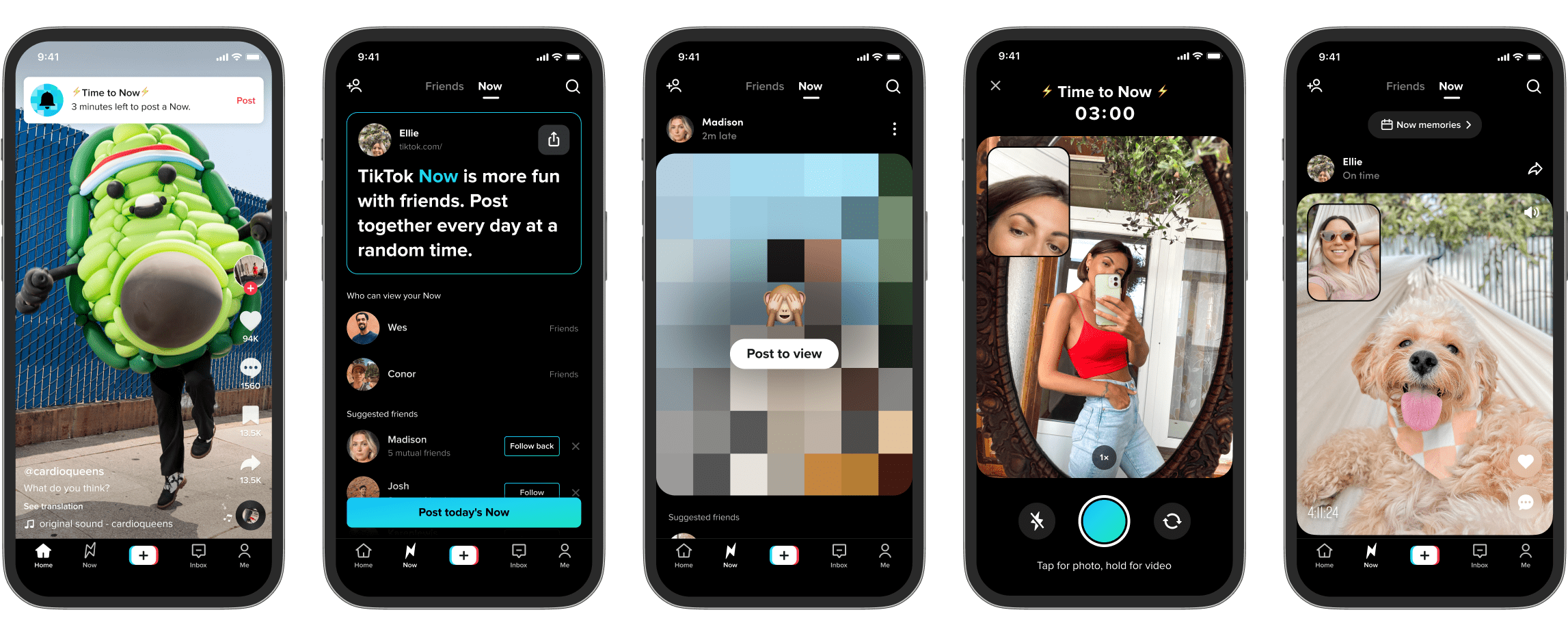Last Updated on 27th September 2023
TikTok has released a new (but familiar!) feature within their app called ‘TikTok Now’. Our online safety experts have taken a look to assess what TikTok Now is, the safeguarding concerns that come with it, and the comparisons it has to the popular photo sharing app BeReal.

What is TikTok Now?
TikTok Now is a newly released feature on the video-hosting social media platform TikTok. It was originally launched in the U.S. in September 2022 but has now been added as an update to apps in the U.K. and will soon roll out to other regions.
TikTok describes the new feature as:
If all this sounds familiar, it’s probably because of BeReal, the app that has seen explosive growth in popularity over the past year (over 1000% increase in downloads!). Just like TikTok Now, BeReal aims for users to share the realities of their lives, rather than curated and carefully edited content, as often seen on platforms such as Instagram.
Both platforms use similar methodology to encourage their users to showcase the ‘real’ side of their lives, including:
However, there are also some key differences between TikTok Now and Be Real.

What Are the Differences Between TikTok Now and BeReal?
| Feature | BeReal | TikTok Now |
|---|---|---|
| Ability to comment on stranger’s posts | ✗ | ✓ |
| Time window given to post within | 2 minutes | 3 minutes |
| Type of content users can post | Photo | A 10-second video or a photo |
| Location sharing | ✓ | ✗ |
| Viewing how many times a photo was retaken before posting | ✓ | ✗ |
What Are the Differences Between TikTok Now and BeReal?
What Are TikTok Now’s Safety Features?
Top Tips
Join our Online Safeguarding Hub Newsletter Network
Members of our network receive weekly updates on the trends, risks and threats to children and young people online.















